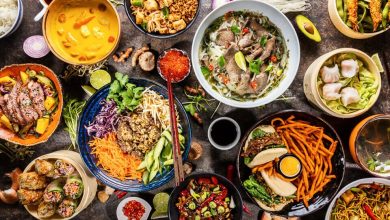Best Foods to Try in Hong Kong

Knowing the background, you expect to see a European city rather than a Chinese one. Indeed, modern Hong Kong is a real melting pot that combines thousands of years of Chinese traditions and almost two hundred years of British colonial influence. This is a lively, dynamic, prosperous metropolis with a rich culture, including gastronomy.
Philosophy of purity
Hong Kong cuisine is based on Cantonese, the most “clean” and “transparent” among the regional culinary traditions of China. The main thing in it is the essence of the product, its taste and freshness. There are practically no rich sauces that mask products beyond recognition, and even in a complex dish you can recognize most of the ingredients. Or at least try…
“I think Russians should like the hot pot: it’s cold here, and it keeps you feeling so warm all the time,” says our escort Mandy Lam. Around are bowls with thinly sliced raw meat, mushrooms, vegetables, possibly with fish and seafood, and bowls with various sauces. Participants in the feast immerse pieces of food in the broth, and then dip in the sauce. An excellent option for a leisurely evening meal with friends, a sort of Chinese version of fondue. It makes sense to try a hot pot in special establishments where it is customary to come in large companies.
Streets of the world
For institutions with street food in Hong Kong, in general, a rather narrow specialization is typical.
Every local resident knows exactly where they serve the best noodles in the area, dim sum or barbecue goose. Most likely, it will be a real eatery, with wooden benches along long tables, a short menu (though in two languages – English is the second state language here), reusable chopsticks and plastic cups. Such asceticism does not affect the quality of food at all.

This is confirmed by stickers on the doors of many establishments from leading guidebooks, including the Michelin Red Guide. It was in such a place, on the advice of the well-known food blogger in Hong Kong, Michael Lam, that we went for a goose cooked in the hot air of huge vertical ovens. Why the dish is called barbecue goose is not very clear – perhaps because of the marinade that is used to lubricate the bird before baking. It gives the skin a mirror-like gloss and an incredible maroon color. A serving is based on half a bird, with only sour-spicy plum sauce. Such is the Hong Kong answer to the Peking duck.
In the heart of Hong Kong Island, a little away from the bank buildings of glass and concrete, Tai Cheong Bakery serves the city’s best egg tarts: bright yellow custard baked in short crust pastry baskets. This dessert has come a long way: Pastel de nata cakes from Portugal made their way to Macau, and from there, across the strait, to Hong Kong. Here they have been transformed into egg tarts, a rare case of sweet dim sum.
Not far away is Lan Fong Yuen’s street shop with Hong Kong milk tea – isn’t there an influence of the British tradition of tea drinking here? Due to the special method of preparation, this tea is also called stocking tea, something like “sock tea”. Tea is brewed – it is brewed! – on the stove in large vats, and then filtered into steel kettles through a cloth filter, which in its appearance most of all resembles a long sock. Sweetened condensed milk is mixed into filtered tea and served either hot or chilled and over ice, as you wish. Such tea or coffee with milk usually accompanies buns with condensed milk or roast pork.
However, the most outlandish street food turned out to be turtle jelly, which was offered to us in Kung Lee’s shop. This dark brown “jelly” is actually boiled from the bottom of a tortoise shell with the addition of local herbs and seasonings. For my taste – a pure mixture! Seeing the bewilderment on my face, Mandy confirmed with a laugh that turtle jelly was more healthy than tasty food. As we learned later, here many products are valued precisely for their benefits, and not for their taste.

Street food is also a source of inspiration for famous Hong Kong chefs. Seeing the extraordinary in the traditional is Alvin Leung’s special gift. At his BO Innovation restaurant (three Michelin stars), he serves an appetizer based on traditional Hong Kong waffles made from the thinnest crispy dough with squeezed hemispheres. Alvin connected the waffles in pairs and filled the resulting spheres with ham and poached green onions.
But ice cream with the taste of Chinese smoked sausage, covered with a cap of whipped proteins, like a baked Alaska dessert, turned out to be completely unusual and unexpectedly tasty. As, however, is the chian dan chee ham and egg sandwich transformed beyond recognition, devoid of bread and turned into egg foam melting on the tongue with the taste of local dry-cured ham.
The “sandwich” is served in a jar of baby food and is called “Baby Food” on the menu. But if I had to choose only one of the 13 set changes, it would be the Tomato dish: a red tomato stewed in dark rice vinegar, a yellow tomato with pickled young ginger, a crumb of Chinese fermented olives – dry, black, with a bright smoked taste, tomato marshmallow with green onion infused butter and goat cheese.
Dumplings dumplings discord
A kind of hallmark of Hong Kong cuisine – dim sum, one might say, the world’s first fast food. Of all the incredible variety, the most famous are “stuffed dough”, steamed. These are the famous transparent dumplings with har gow shrimp, and shao mai bags open on top, and bao dzy yeast donuts with various fillings, including sweet ones.




